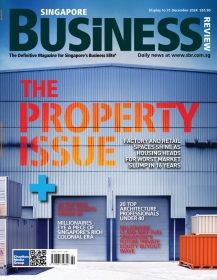
Turbulent flight: SIA’s earnings outlook for 2012 to remain grim
Blame it on global economic weakness and high jet fuel prices.
DMG has cut its revenue and earnings estimate for FY 12 by 2% and 32%.
Here’s more from DMG:
| SIA’s management sees the group’s outlook for the coming quarters being fraught with challenges amid the global economic weakness, which will exert pressure on passenger demand and yields, as well as persistently high jet fuel prices. We have shaved our revenue and earnings for FY12 by 2% and 32% respectively on a higher jet fuel cost assumption and after lowering some of the airline’s key operation statistics. Remaining quarters to be challenging. During yesterday’s analysts briefing, SIA’s management highlighted that the outlook for the coming quarters will remain grim on the back of global economic weakness, which will put pressure on passenger demand and yields, as well as high jet fuel costs. SIA’s forward bookings remain flat relative to last year, suggesting that there is persistently weak demand. Given the dismal outlook, management has cut its capacity guidance from 6% to 5%. The weaker load factor in 1Q was largely attributed to poor demand for its North Asian routes, particularly Japan (following the earthquake), as yields from medium haul routes tend to be the most lucrative. While Euro and US exhibited some demand growth, this was not enough to propel SIA’s revenue in order to offset the impact of higher cost of jet fuel, which has surged 50% y-o-y. Management said passenger demand in South-East Asia remains strong, pointing to the growth in Silk Air’s passenger numbers. Of course, this came with a price as there was cannibalizing of SIA’s passenger yields. Hopes on cargo to catch Christmas shipments. Cargo slowed on the confluence of several factors, notably: i) the Japan earthquake, which led to disruptions in the production supply chain across the globe (as key microelectronic components are mostly sourced from Japan); ii) China’s slowing economy as the government took to monetary tightening, and iii) the slowing pace of recovery in the manufacturing sectors of the developed economies of US and Europe. Nonetheless, management is banking on the pre-Christmas shipment rush bolstering demand. SIA, however, noted that demand may shift from sea to air, pointing out that most container shipping companies had just missed the Christmas shipping season owing to the earlier global supply chain disruption sparked by Japan’s earthquake. Update on low cost carrier foray. Management remains tight-lipped on disclosing the details of its proposed LCC venture. Management has disclosed the appointment of the CEO for the LCC business and its aircraft type, which will be a Boeing 777 transferred from SIA. Management also highlighted that the risk of cannibalization is highly likely. However, on a positive note, the upcoming long/medium haul low cost carrier is highly likely to create new demand for travel as it will operate as an independent entity separate from SIA and Tiger Airways. More announcements would be made over the next few months. Nevertheless, we reaffirm our view that cannibalization is a key risk to tapping this price sensitive market. Cutting earnings for FY12. On the back of the poor 1Q results, we trim our revenue and earnings for FY12 by 2% and 32% respectively after tweaking some of SIA’s key operating assumptions. For SIA’s passenger carrier service, we have toned down our load factor assumptions from 78% to 77% and also taken management’s guidance of 5% capacity growth. We have also revised downwards the yield assumption to 11.9 cents/RPK from 12.1 cents/RPK given the weaker-than-expected yields amid intensifying competition. For the cargo side, we have toned down our ATK growth number to 8% (earlier 11%) and lowered the load factor to 63.3% (from 65%). That said, the limp yield outlook prompted us to trim our yield assumption from 36.2 cents/LTK to 35.4 cents/LTK. Overall, given the weaker load factor, fuel burn would not be efficient. Management’s hedging strategy appears to be ineffective as it has hedged 20% of its jet fuel requirement (over the next 15 months) at a high jet fuel price of USD130 per barrel as opposed to the current price of USD134/barrel. This prompted us to nudge up our base case jet fuel assumption for FY12 from USD127 to USD129. Our sensitivity analysis suggests that a 1USD change in jet fuel from our base case assumption would bring about a 6.2% change in earnings (SGD27m). |
Photo credit: Siddharth24
























 Advertise
Advertise






